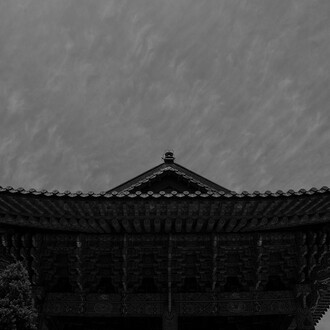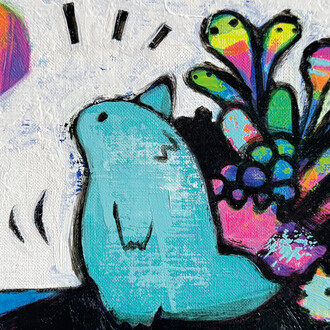With Kim Se-Yong's Celadon pottery exhibition, which includes traditional vessels and framed porcelain open lotus scrolls, Kate Oh Gallery continues to exhibit beautiful, green-glazed celadon ceramics. Kim Se-Yong is an exemplary potter, with work that belongs to international collections including Queen Elizabeth of England, the Dalai Lama's Palace in India, the Blue House in Seoul, Korea, and the Baur Collection, amongst others. But perhaps most notable is Kim Se-Yong’s sensitivity to the long-winding history of his practice.
Celadon ceramics were originally executed during the Goryeo kingdom (AD 918-1392); as the fourteenth century came to a close, however, the practice of manufacturing these vessels ceased. The production of celadon ceramics came to a halt until the 1880s when archaeological ventures began unearthing these relics. Slowly but surely, beginning with initial interest spurred by Korean audiences—and then Japanese, American, and European collectors—celadon wares gained revitalized interest.
Korean celadon wares reached an apotheosis in popularity during the 1910s when they experienced a market boom; this was met with a decrease in their availability in the 1930s, with the objects, in turn, growing revered and prized. Although it continues to be a pervasive misconception, it was not only the Japanese who were interested in Korean celadon antiquities during the 1880s and 1890s, the period in which Korean objects resurfaced.
Both Japanese and Western scholars and collectors flocked to the celadon ceramics of the Koryo era, the pieces becoming particularly coveted during the 20th century. Celadon ceramics were initially scarce, as it was illegal to desecrate the tombs where they were located. This exacerbated their venerated aura. Celadon ceramics became highly desirable in the 1910s, chiefly due to their beauty and putatively antiquarian references and motifs.
The pieces were revered as objects that retrospectively presented a lost epoch and untainted culture, stilted in time—undoubtedly the ambit of Western fetishization that passed over the complexity of the celadon practice. An 1888 account from British Vice-Consul William R. Carles (1848-1928) details how celadon wares were taken from graves in proximity to Kaesong, where members of the Goryeo royal family had been buried:
In the winter after my return to S[e]oul [in 1884-1885] I succeeded in purchasing a few pieces, part of a set of thirty-six, which were said to have been taken out of some large grave near Songdo [Kaesong].
These excavated celadon pieces were decorated with sanggam inlay, using white and black pigments that were stamped or carved to create motifs of cranes, clouds, ducks, lotuses, and willows. These inlaid motifs included irregular white fragments that, Carles incorrectly speculated, were made of either quarts or porcelain, “which must have been embedded in the clay before the baking.” However, as Charlotte Horlyck, a specialist in Korean pre-modern and modern art history, notes, “[i]n reality, the inlaid patterns were created by filling the incised motif with slip.”
At their height, celadon was collected for a range of reasons, not least of all the intricate floral designs darting these antiquities. Goryeo celadon in particular, and unlike Song celadon, often included qualities such as soft tinges on clear glazes alongside intricately carved designs and inlaid decorations, motifs that Kim Se-Yong draws from in his Ume Blossom, Lotus Chrysanthemum series.
The artist’s “Nude open-work series” piece is, in particular, a superlative rendering of technical dexterity, molded matrices of lineal elements charting across the ware's exterior, negative pockets of space in relief. Scaffolded in a skeleton-like plexus, creating this piece requires not only finely attuned art historical knowledge but also a corporeal mastery in intuiting the “weak points” of the ceramic, creating a vessel that retains structural integrity. Kim Se-Yong artist culls the best of this ancestral tradition, wholly interested and utterly dedicated to retaining time-honored conventions and symbology.
(by Ekin Erkan)
















